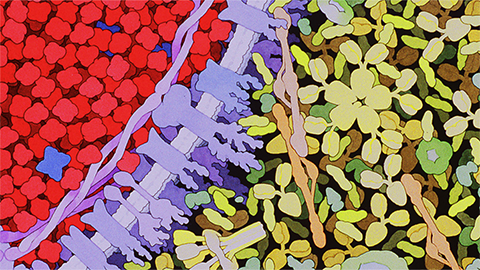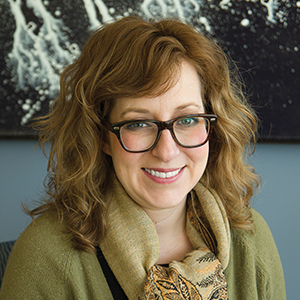Celebrating the Protein Data Bank
The Protein Data Bank has supported and transformed structural biology and structure-based drug design since its founding in 1971.
“PDB has consistently provided the three-dimensional coordinates of biological molecules to students, academic researchers and drug designers alike,” said PDB co-founder Helen M. Berman. “Indeed, the current public health crisis caused by the SARS-CoV-2 virus highlights the critical importance of structural biology. Several hundred new entries have been deposited in the PDB in the quest to find therapeutics for SARS-CoV-2 and abate the COVID-19 pandemic.”
Over the past five decades, the number of structures stored within the PDB has grown from the initial seven to more than 170,000.

In May, the structural biology community will celebrate the PDB with a virtual symposium called PDB50 hosted by the Worldwide PDB and the American Society for Biochemistry and Molecular Biology.
“The symposium will recognize the impact of structural biology and the PDB on fundamental biology, biomedicine, bioenergy and biotechnology,” said Berman, a distinguished professor emerita at Rutgers, The State University of New Jersey.
Berman has been with the archive since the beginning. In the late 1990s, the PDB moved from Brookhaven National Laboratory to the Research Collaboratory for Structural Bioinformatics, a consortium that Berman led. Later, she helped establish the Worldwide PDB, partnering organizations in the U.S., Europe and Japan to maintain the global archive collectively.
In recognition of her contributions to the field, Berman has received many awards, including the 2013 DeLano Award for Computational Biosciences from the ASBMB.
In the interview below, Berman describes how the PDB has both shaped and been shaped by the work being done by structural biologists. It has been edited for length, style and clarity.

Important dates
March 15: Abstract deadline and early registration deadline
April 2: Abstract programming notifications will be sent by email
May 1: Regular registration deadline
May 3–5: Symposium
Invited speakers
Edward Arnold, Rutgers, The State University of New Jersey
Helen M. Berman, Rutgers, The State University of New Jersey and University of Southern California
Thomas L. Blundell, University of Cambridge
Alexandre M. J. J. Bonvin, Utrecht University
Stephen K. Burley, Rutgers, The State University of New Jersey and University of California, San Diego
Wah Chiu, Stanford University
Johann Deisenhofer, University of Texas Southwestern Medical Center
Juli Feigon, University of California, Los Angeles
Angela Gronenborn, University of Pittsburgh
Jennifer L. Martin, University of Wollongong
Stephen L. Mayo, California Institute of Technology
Zihe Rao, ShanghaiTech University and Tsinghua University
Hao Wu, Boston Children’s Hospital
How has PDB — its very existence — shaped the field?
PDB began more than 50 years ago as a very small archive of a few structures, and it’s grown to more than 170,000 structures.
From my point of view, what’s important about the PDB is what’s in the PDB. Deposition of structures in the PDB is a requirement of most journals and funding agencies, ensuring a level of quality control and accessibility of structural biology data. From very, very small, very well-determined structures to structures that are huge and studied by combinations of methods, the PDB is a treasure trove for research from drug discovery to artificial intelligence. The PDB ensures no structure is lost, whether the structures are determined by X-ray crystallography, nuclear magnetic resonance or cryo-electron microscopy.
In fact, these structures greatly enhance future structure determination by providing the initial models for molecular replacement and initial fittings into a density map. These structures are also essential in the development of integrative models of large macromolecular machines, where the structures and data come from multiple experimental and computational methods, ranging from proteomics to small-angle scattering.
The PDB plays a seminal role in structure-based drug design, a mainstay of many of our current therapeutics. And the existence of the PDB has given rise to the entire field of structural bioinformatics.
How does the PDB adapt to change in structural biology?
The PDB is constantly evolving to accommodate new structure-determination methods. Initially, all the structures were determined by X-ray crystallography, then NMR and cryo-EM. The current challenge is accommodating more complex integrative models.
Stewardship of the data is critical, with community task forces guiding the specific validation methodologies. While initial validation checks focused on geometry and nomenclature, now the structures are checked against the appropriate experimental data.
In addition, the IT infrastructure used to manage new data must continually evolve to support the ever-growing archive.
What themes will be highlighted in PDB50?
An international panel of speakers was chosen. (They) are leaders in each of the major structure-determination methodologies. These include the quickly evolving fields of X-ray crystallography, biological NMR, cryo-EM and integrative modeling of macromolecular assemblies.
Speakers will also provide historical perspective on this critical field while describing a diverse range of structures of proteins, nucleic acids and a variety of complexes.
In the panel speakers’ presentations, we touch on many critical aspects of biology, including the current COVID-19 pandemic caused by SARS-CoV-2.
About the Worldwide PDB
The Worldwide PDB was formed in 2003 to manage the global archive. Berman said it is committed to ensuring the quality and availability of the structures.
The current members are:
- Research Collaboratory for Structural Bioinformatics Protein Data Bank (RCSB PDB)
- Protein Data Bank Europe (PDBe)
- Protein Data Bank Japan (PDBj)
- BioMagResBank (BMRB)
The abstract deadline is coming up in March. What kinds of submissions are you expecting?
All fields relating to structural biology are welcome. We are hoping that the poster presenters will reflect the broad range of research fields that are impacted by the PDB. These range from structure determination to structural bioinformatics, from structure-based drug design to new integrative methods.
Our hope is that PDB50 will not only be an opportunity to highlight the leading experts in the field but also, in the poster session, an opportunity for new students becoming our future leaders to participate.
Basically, the sky is the limit because the PDB has so many different structural stories.
This will be a virtual meeting, so it’ll be more accessible. How did the virtual format affect your planning?
One advantage of having a virtual meeting is that people from around the world will be able to participate. One of the reasons that the meeting is split into two days is that we want participation throughout the worldwide time zones. We’re trying to make it so that people will have the maximum chance of being able to participate.
The event will be recorded and made available to registered participants after the meeting.
After the PDB50 international meeting, regional meetings in the US, Europe and Asia will promote the broadest possible participation.
Event organizers

- Celia A. Schiffer, University of Massachusetts Medical School
- Helen M. Berman, Rutgers, The State University of New Jersey, and RCSB PDB
- Stephen K. Burley, Rutgers, The State University of New Jersey, and RCSB PDB
- Jeffrey C. Hoch, University of Connecticut and BMRB
- Gerard J. Kleywegt, European Bioinformatics Institute and PDBe
- Genji Kurisu, Osaka University and PDBj
- John L. Markley, University of Wisconsin–Madison and BMRB
- Sameer Velankar, European Bioinformatics Institute and PDBe
- Christine Zardecki, Rutgers, The State University of New Jersey, and RCSB PDB
Enjoy reading ASBMB Today?
Become a member to receive the print edition four times a year and the digital edition monthly.
Learn moreFeatured jobs
from the ASBMB career center
Get the latest from ASBMB Today
Enter your email address, and we’ll send you a weekly email with recent articles, interviews and more.
Latest in Careers
Careers highlights or most popular articles

Upcoming opportunities
Calling all biochemistry and molecular biology educators! Share your teaching experiences and insights in ASBMB Today’s essay series. Submit your essay or pitch by Jan. 15, 2026.

Defining a ‘crucial gatekeeper’ of lipid metabolism
George Carman receives the Herbert Tabor Research Award at the ASBMB Annual Meeting, March 7–10, just outside of Washington, D.C.

Building the blueprint to block HIV
Wesley Sundquist will present his work on the HIV capsid and revolutionary drug, Lenacapavir, at the ASBMB Annual Meeting, March 7–10, in Maryland.

Upcoming opportunities
Present your research alongside other outstanding scientists. The #ASBMB26 late-breaking abstract deadline is Jan. 15.

Designing life’s building blocks with AI
Tanja Kortemme, a professor at the University of California, San Francisco, will discuss her research using computational biology to engineer proteins at the 2026 ASBMB Annual Meeting.

Upcoming opportunities
#ASBMB26 late-breaking abstract submission opens on December 8. Register by Jan. 15 to get the early rate on our Annual Meeting.

